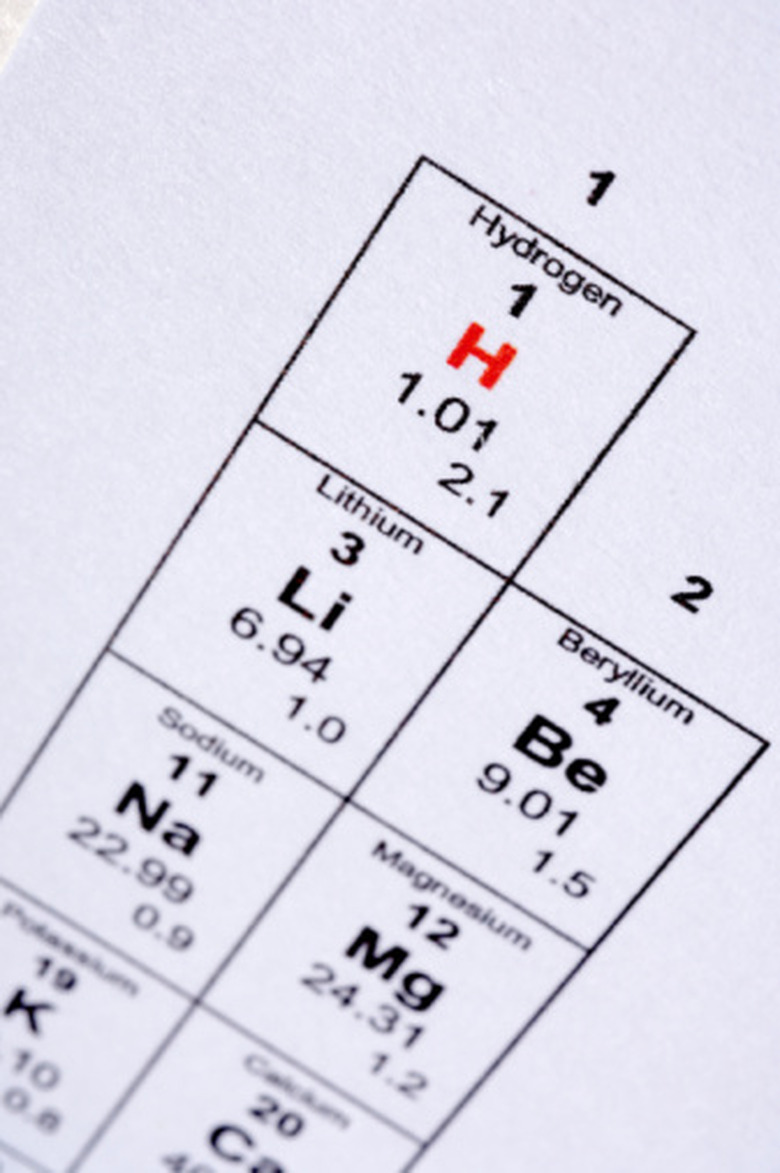What Are The Smallest Particles Of An Element?
An element is a substance completely made up of one atom. Thus, the periodic table of elements is effectively a list of all known types of atoms. However, the atom itself is not the smallest known particle, but instead each atom is made up of three individual parts: electrons, protons and neutrons. Furthermore, protons and neutrons themselves are made up of even smaller parts called quarks.
Electrons
Electrons
Electrons are fundamental particles, which means no particle is known to make up an electron. Electrons are what give an atom of an element its charge; you can change the number of electrons to make it a positively- or negatively-charged version of the same atom. A neutrally-charged atom will have the same amount of electrons as protons. Electrons exists in orbitals, which surround the nucleus of the atoms, and it is in these orbitals that electrons can bond with other atoms to form compounds.
Protons
Protons
Protons are the defining characteristic of an element's atom; the number of protons is what gives the atom its mass (electrons have a negligible amount of mass in comparison to protons). Thus, elements are classified by the number of protons its atoms have and organized in such a way on the periodic table (e.g., a hydrogen atom has one proton, a carbon atom has six, etc.). Protons are found in the nucleus of the atom.
Neutrons
Neutrons
Neutrons are about as massive as protons, and are found in the nucleus of the atom alongside protons. While protons have a positive charge and electrons have a negative charge, neutrons have no charge. Much how changing the number of electrons does not change the element itself, changing the amount of neutrons keeps relatively the same type of element, but creates an isotope. Isotopes can be unstable, and when they decay, they release energy in the form of radiation.
Quarks
Quarks
Electrons are fundamental particles; however, protons and neutrons are made up of a different set of fundamental particles known as quarks. Discovered in 1961, quarks are the smallest known particles in physics, and there are six types (up, down, charm, strange, bottom and top). Three quarks combine together to form baryons, which include protons and neutrons. A quark can also combine in a pair with an antiquark to form a meson, but this type of matter is extremely unstable and lasts for only a fraction of a millisecond.
Cite This Article
MLA
Lichtenstein, Drew. "What Are The Smallest Particles Of An Element?" sciencing.com, https://www.sciencing.com/smallest-particles-element-8389987/. 24 April 2017.
APA
Lichtenstein, Drew. (2017, April 24). What Are The Smallest Particles Of An Element?. sciencing.com. Retrieved from https://www.sciencing.com/smallest-particles-element-8389987/
Chicago
Lichtenstein, Drew. What Are The Smallest Particles Of An Element? last modified August 30, 2022. https://www.sciencing.com/smallest-particles-element-8389987/
